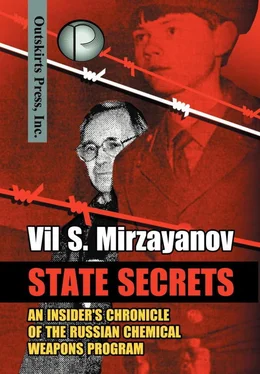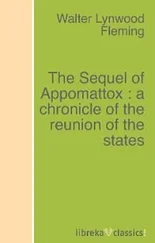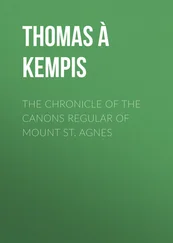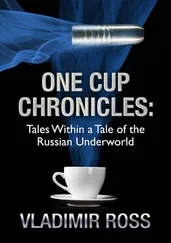Sadly, Turkeltaub died of a heart attack at the young age of 44. I think the reason for his early death was too many tragedies in his life. When he was a student in 1939, he was mobilized into the Polish Army and found himself on the front fighting against the Soviet Union. He was taken prisoner and ended up in a prisoner of war camp near Saratov.
During the Second World War, Sokolov’s laboratory for gas well surveys was evacuated to Saratov, and they continued working there, sending out field expeditions. Geochemists performed their gas well surveys, and the results were used to predict the locations of oil deposits. Their methods involved the analysis of hydrocarbon gases in the air samples taken from shallow boreholes.
Sokolov had suggested this method at the beginning of the 1930s, and it seemed promising, because it didn’t require expensive drilling to discover oil deposits. At that time, there were only two dilapidated oil drilling rigs in the country. The situation in this industry was so desperate that Sergo Ordzhonikidze, the Commissioner for Heavy Industry, even promised to present “his last pair of underwear” to someone who would suggest an alternative solution. Very soon, Sokolov became that person.
The people’s commissar kept his word, but he presented the inventor with a dacha near Moscow and a car, instead of his underwear. However, not a single oil deposit in the country was discovered with this method. The most important thing for the Soviet system was to come up with a new initiative, or to assume the obligations of the so-called “socialist labor competition”. Soon, Sokolov became a Doctor of Sciences and a professor without having to defend any dissertation. The professor dispatched his first scientific expeditions (at the expense of the state, of course) to his dacha in the Moscow suburbs.
One time, when the geochemists were working on a field trip not far from the camp of Polish prisoners of war, a woman who was working in the expedition noticed that one of the captives, a young handsome brunette, was closely observing their work. They soon got acquainted, as the guards didn’t pay much attention to the expedition workers. They had become accustomed to their presence near the camp. It turned out that the captive, Nisson Turkeltaub, was a former student of Krakov University. He knew very well what the scientists were doing there, because he had worked with similar instruments at his university.
Soon Turkeltaub started working with the expedition party, returning to his camp at night. His exceptional talent and diligence impressed the head of the expedition, who asked the higher authorities to release Turkeltaub to his personal custody. However strange as it may seem for that dreadful time, the authorities were lenient, and they met the expedition’s leader’s request halfway. Sokolov’s uncanny ability to find convincing and irresistible arguments played a role in this. He was excellent at that.
After the war, Turkeltaub graduated from Saratov University, and he quickly carved out a brilliant career in science, becoming the favorite scientist of all chromatography specialists in the USSR. His collaboration with the outstanding Russian scientist Zhukhovitsky played a great role in that.
Zhukhovitsky was a world famous scientist who made a serious contribution to the field of molecular structure, adsorption, diffusion, and chromatography. He was awarded a rare international prize for his achievements in the field of chromatography, a gold medal named after Mikhael Tsvet, the founder of chromatography. Zhukhovitsky became a Doctor of Chemical Sciences at the age of 27, which is a rare achievement for a chemist in any country. In his doctoral dissertation, he wasn’t afraid to challenge the authority of Michael Dubinin, the official “master” of this science in the USSR. He remarked that Dubinin’s so-called volumetric theory of adsorption was nothing but the repetition of the famous theory of Polyani. As a result, Zhukhovitsky had to defend his dissertation for a second time, before the Higher Attestation Committee. The official opponent of the young scientist was Dubinin himself. In spite of this, the committee had to approve the talented young man’s work.
But, Dubinin, who was an academician, a lieutenant general, and the head of the Department of Adsorption at the Voroshilov Academy of Chemical Defense, later got his revenge by preventing Zhukhovitsky from being elected a member of the U.S.S.R. Academy of Sciences. Also in 1948, during the campaign against “cosmopolitanism”, Dubinin published a “stinging” article in Proceedings of Academy of Sciences of the U.S.S.R. about Zhukhovitsky, who was by then the First Deputy Director of the Karpov Physical Chemical Institute. Unfortunately, by that time Zhukhovitsky had already published his article on problems of molecular structure, in collaboration with the well-known English scientists Heitler and London in an English journal. At that time, this was considered to be a sign of “cosmopolitanism”, and Dubinin’s article was a direct appeal to the KGB to punish the author.
Zhukhovitsky miraculously escaped the sad fate of many Russian scientists who were sent to the Gulags. During the war and afterwards, he fruitfully served the needs of the military, and that may have made a difference. For example, for many years he studied the questions of adsorption protection from chemical agents, at the Central Military Scientific Research Technical Institute (TsNIIVTI).
Almost 60 years after Dubinin’s provocative article was published, I was holding those very Proceedings of the Academy of Sciences of the U.S.S.R. in my hands, in the New York Public Library. I can’t tell you how mean-spirited and vile it was for me!
I met with Dubinin only once, and I was struck by his “flexibility”. While I was writing my doctoral dissertation, I had to study the adsorption dynamics of soman and sarin on carbon adsorbents. I was working with a gas chromatography (GC) method for analysis, in order to avoid mistakes in the calculation of equilibrium concentrations. I selected samples from the gas stream coming out of the adsorption tube, with determined concentrations of soman and sarin in them, and then I recorded the so-called adsorption fronts. When I tried to process the same results using Dubinin’s equation, using all the corrections he had suggested, everything was excellent and my data fit this equation, but the final constants were much larger than the author had suggested. Nobody could explain to me what the problem was.
Then I decided to ask Dubinin himself about it. One day, when he was at a meeting of the Science Council of GOSNIIOKhT, I asked him to find some time for me. He agreed and I briefly explained my difficulties. He didn’t suggest anything reasonable in response, but he wisely remarked that sometimes an experiment was worth many theories. Professor Nikolaev from the Academy of Chemical Defense overheard our conversation and hurried to rescue his boss. He explained that I had worked with small concentrations, and the equation was meant for large concentrations.
In fact, I had worked with a wide range of concentrations, from large to micro-concentrations. But this argument had no relevance because I had to defend my doctoral dissertation. I had already gone through so many difficulties, that I decided not to acquire an adversary.
It proved to be no easy task for me to part from my former supervisor, Professor Sokolov. It wasn’t difficult to get a new scientific supervisor, because it seemed that the directorate of the institute understood the situation very well. At that time, Andrei Bashkirov, who was a corresponding member of the Academy of Sciences of the U.S.S.R., was very well respected among scientists. He advised me bluntly, “Run away from Sokolov before it is too late!”
Читать дальше












